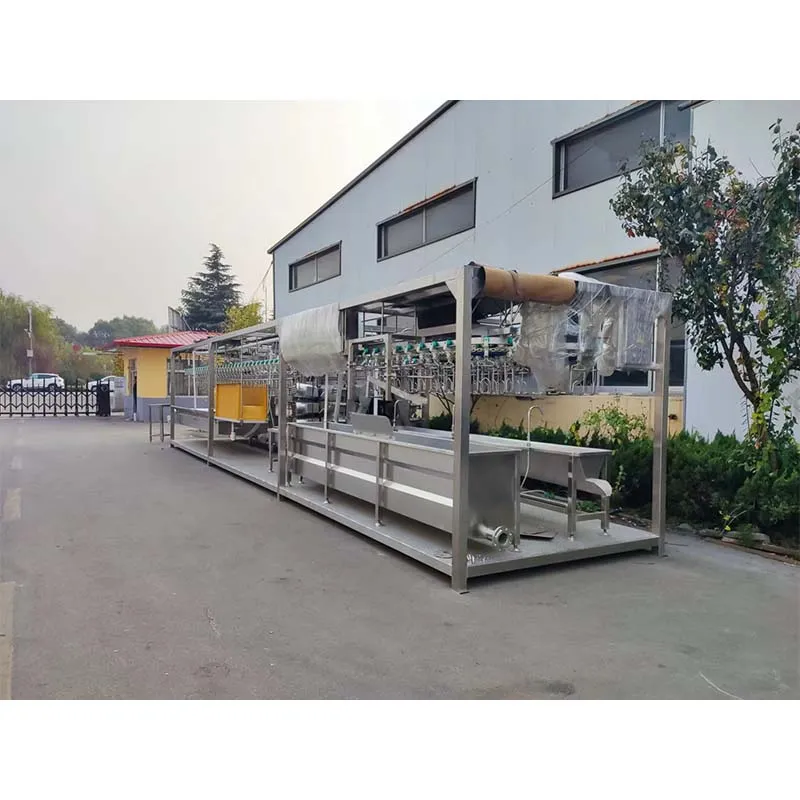farrowing pen
វិច្ឆិកា . 20, 2024 20:38 Back to list
farrowing pen
The Importance of Farrowing Pens in Swine Production
Farrowing pens are an essential element in modern swine production, particularly in the management of sows during the critical farrowing period. The design and functionality of these structures can significantly influence litter survival rates, the health of the mother and piglets, and overall farm efficiency. With the increasing focus on animal welfare and productivity in pig farming, understanding the significance of farrowing pens is vital for farmers and stakeholders in the industry.
Understanding Farrowing Pens
A farrowing pen is a specialized housing unit designed for sows to give birth (farrow) and care for their newborn piglets. Generally, these pens provide enough space for the sow to move comfortably while restricting the piglets' space, reducing the risk of accidental crushing – a major cause of mortality in young piglets. Proper design elements of a farrowing pen include features like heat lamps for warmth, solid flooring for hygiene, and adequate separation between the sow and her piglets to promote safe movements.
Benefits of Well-Designed Farrowing Pens
1. Increased Piglet Survival Rates The primary function of farrowing pens is to enhance piglet survival. By minimizing the risk of crushing and providing a controlled environment, farmers can see improved birth-to-weaning survival rates. Studies show that piglet mortality can be reduced significantly with the right pen design, reflecting a direct benefit for producers in terms of economic returns.
2. Enhanced Sow Welfare A good farrowing pen design also focuses on the welfare of the sow. Adequate space, comfort features, and the ability to express natural behaviors can reduce stress and improve the health and productivity of the sow. Healthier sows are more likely to have successful farrowings and better maternal care, contributing positively to overall herd productivity.
farrowing pen

3. Ease of Management Modern farrowing pens are designed not just for the animals’ benefit but also for the convenience of farm workers. Features that allow for easy monitoring of both sow and piglets, as well as efficient cleaning and maintenance, can save time and labor costs. Automation features like feeders and waterers can further enhance management efficiency.
4. Disease Control Well-designed farrowing pens contribute to better biosecurity practices. Containment of sow and piglet health reduces the risk of introducing pathogens to the herd, making it easier to control diseases. A clean, well-maintained pen with appropriate ventilation minimizes disease transmission, further ensuring the health of the animals.
Innovations in Farrowing Pen Design
With advancements in technology and a greater understanding of animal behavior, innovative designs are emerging in farrowing pens. Some modern systems include environmental controls that adjust temperature and lighting, ensuring optimal conditions for both the sow and piglets. Furthermore, the use of durable and easily sanitized materials in pen construction is becoming standard, reducing the risk of disease outbreaks.
Conclusion
In summary, farrowing pens play a crucial role in the success of swine production. Their design influences not only the welfare of sows and their piglets but also impacts the economic viability of pig farming operations. As the industry continues to evolve with a focus on sustainability and animal welfare, investing in high-quality farrowing pens is a necessary step for any forward-thinking swine producer. By prioritizing the health and safety of both sows and piglets through the implementation of innovative farrowing pen designs, farmers can ensure that their production systems are not only efficient but also uphold the highest standards of animal welfare. In the competitive landscape of agriculture, such measures will foster long-term success and sustainability in the swine industry.
-
Automatic Feeding Line System Pan Feeder Nipple Drinker|Anping County Yize Metal Products Co., Ltd.
NewsJul.30,2025
-
Automatic Feeding Line System - Anping Yize|Pan Feeder,Nipple Drinker
NewsJul.30,2025
-
Automatic Feeding Line System - Anping County Yize Metal Products Co., Ltd.|Pan Feeder, Nipple Drinker
NewsJul.30,2025
-
Automatic Feeding Line System-Poultry Farming|Chicken Feeding&Watering
NewsJul.30,2025
-
Automatic Feeding Line System - Anping County Yize Metal Products Co., Ltd.|Pan Feeder Nipple Drinker,Broiler Farming
NewsJul.30,2025
-
Automatic Feeding Line System Pan Feeder Nipple Drinker-Anping County Yize Metal Products Co., Ltd.
NewsJul.30,2025






